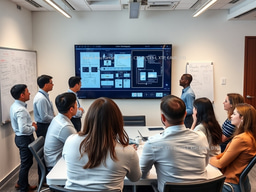How does AV technology impact entertainment experiences?

AV (Audio-Visual) technology has become a cornerstone of modern entertainment, revolutionizing the way we experience music, theater, cinema, and live events. The integration of cutting-edge audio systems, sophisticated lighting, and advanced visual displays has transformed traditional entertainment into immersive, captivating experiences.
Advancements in Audio Technology
- High-Definition Sound Systems
The evolution of sound systems from mono and stereo to surround sound and beyond has dramatically improved the auditory experience. High-definition (HD) sound systems, including Dolby Atmos and DTS, create a multi-dimensional soundscape that envelops the audience. This technology places sounds in a three-dimensional space, making them more lifelike and engaging. For example, in cinemas, these systems allow viewers to hear the rustle of leaves or the distant rumble of thunder with pinpoint accuracy, enhancing the storytelling and emotional impact.
- Spatial Audio
Spatial audio represents a significant leap in audio technology, particularly in the context of virtual and augmented reality (VR and AR). It provides a more realistic auditory experience by simulating how sound waves interact with the human ear from different directions. This technology is crucial in VR gaming, where the accurate placement of sound can provide players with a more immersive and realistic experience, allowing them to locate objects or anticipate events based solely on auditory cues.
Visual Innovations
- High-Resolution Displays
The quality of visual displays has advanced significantly, with 4K and 8K resolutions becoming the standard in both commercial and consumer markets. These high-resolution displays provide unparalleled clarity and detail, enhancing the viewing experience. In cinema and home entertainment, 8K displays offer an unprecedented level of detail, allowing viewers to see every nuance of the picture, from intricate textures to subtle color variations.
- LED and OLED Technology
LED and OLED (Organic Light Emitting Diode) technologies have revolutionized visual displays by offering brighter colors, deeper blacks, and greater energy efficiency. OLED, in particular, is praised for its ability to produce true black colors, which is essential for high-contrast scenes in movies and games. This technology has also enabled the development of flexible and curved screens, opening up new possibilities for immersive viewing experiences in both personal and public entertainment spaces.
Lighting and Projection Technologies
- Dynamic Lighting Systems
Lighting plays a crucial role in setting the mood and enhancing the atmosphere of live events. Dynamic lighting systems, including moving lights and intelligent lighting fixtures, allow for precise control over color, intensity, and movement. These systems can be programmed to synchronize with music and visual content, creating a cohesive and immersive environment. For instance, in concerts, lighting can accentuate the music's tempo and emotion, transforming the venue into a pulsating visual spectacle.
- Projection Mapping
Projection mapping is another innovative technology that has gained popularity in live entertainment and art installations. It involves projecting images onto irregularly shaped surfaces, such as buildings or stage props, turning them into dynamic visual displays. This technology is used to create stunning visual effects, such as transforming a stage into a futuristic cityscape or a forest, enhancing the storytelling and overall experience.
Integration of Immersive Technologies
- Virtual and Augmented Reality
VR and AR are transforming the entertainment landscape by providing entirely new ways to experience content. VR offers a fully immersive experience by placing the user in a completely virtual environment, making it ideal for gaming and interactive storytelling. AR, on the other hand, overlays digital information onto the real world, enhancing the user's perception of reality. These technologies are being increasingly used in theme parks, museums, and live events to create interactive and engaging experiences.
- Holography and 3D Displays
Holographic technology and 3D displays are pushing the boundaries of visual entertainment. Holography allows for the creation of three-dimensional images that appear to float in space, providing a futuristic and captivating visual experience. This technology has been used in concerts to bring back legendary performers to life or to create virtual characters that interact with the audience. 3D displays, especially glasses-free 3D, offer an enhanced viewing experience by adding depth and realism to movies and games.
Impact on Different Entertainment Settings
- Live Concerts and Events
AV technology has transformed live concerts and events by enabling more complex and visually stunning productions. High-quality sound systems, dynamic lighting, and large-scale video projections create an immersive environment that engages all the senses. For example, modern concerts often feature synchronized light shows, high-definition video backdrops, and spatial audio, providing an all-encompassing experience that goes beyond just listening to music.
- Theatrical Productions
In theater, AV technology enhances storytelling by providing additional layers of sensory experience. Advanced lighting techniques, sound design, and projection mapping can create realistic or fantastical settings, bringing stories to life in ways that were previously impossible. For instance, projection mapping can transform a simple stage set into a bustling city or a mystical forest, while high-quality sound systems can enhance the mood and tension of the performance.
- Theme Parks and Attractions
Theme parks and attractions are increasingly leveraging AV technology to create immersive and interactive experiences. From 4D cinemas that incorporate physical effects like wind and rain to fully immersive VR rides, these technologies allow visitors to experience new worlds and adventures. The integration of spatial audio, high-resolution displays, and dynamic lighting in rides and attractions provides a multi-sensory experience that captivates audiences of all ages.
Conclusion
The impact of AV technology on entertainment is profound and far-reaching. By enhancing the quality of audio and visual elements, integrating immersive technologies, and creating new interactive experiences, AV technology has revolutionized the way audiences engage with entertainment. As technology continues to evolve, we can expect even more innovative and immersive experiences that will continue to push the boundaries of what's possible in entertainment.
-
Xchange Advocates are recognized AV/IT industry thought leaders and influencers. We invite you to connect with them and follow their activity across the community as they offer valuable insights and expertise while advocating for and building awareness of the AV industry.
Recommended Content
LetsTalkAVbyAlexis Series: Episode 4 : Design Begins With People: Engineering AV Systems Around Real End-User Requirements

LetsTalkAVbyAlexis Series : Episode 2: Network & AV Convergence (AVoIP)





Please sign in or register for FREE
If you are a registered user on AVIXA Xchange, please sign in